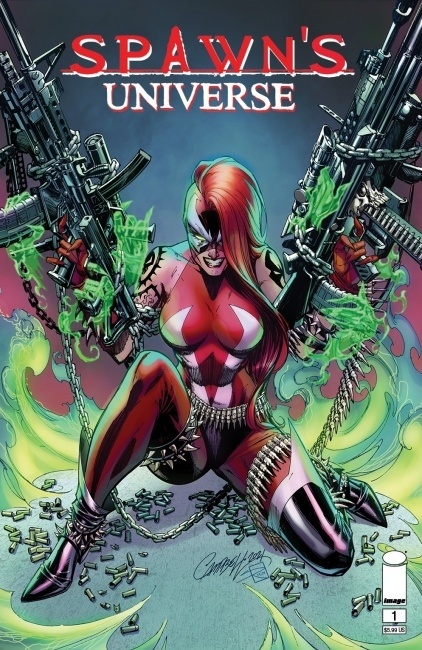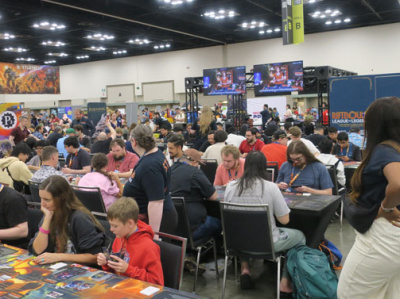Paul Levitz entered comics as a writer, rose to become Publisher of DC Comics, and is now exploring new territory as a writer. In this column he looks at what the pandemic taught us about the question of how many comic titles is enough.
One of the few pleasant surprises of this virus-plagued year is how resilient the comic shops have proved to be. Even those of us who are longtime supporters of the system feared that we would lose large numbers of shops, and with them, large numbers of readers who would find comics shopping just too damn inconvenient in a time filled with too many challenges. Happily, that didn’t prove to be the case. A number of shops went under, to be sure, which is bad news for the owners, staffers and patrons of those stores, but we’ve seen a fair number of new outlets open up too, and the net loss has been much lower than we “experts” predicted. Consider that testimony to the dedication of the people who own and run the stores, the surprisingly effective program of PPP funding provided by the federal government, and the degree of passion our readers have for getting the comics they needed as entertainment in a particularly bleak period.
A second thread of good news has been increased sales of many titles that have been published since most stores were allowed to reopen on some basis by their states. It’s been an unlikely record year for a number of publishers, with a measurable spike in the sales levels of many ongoing titles or new launches compared to similar predecessors. Some of this phenomenon can be attributed to the extra leisure time we’re all experiencing as captives of our homes, without access to as many other activities as usual. Another factor is certainly a run of better content in some major publishers’ titles, which often has had the effect of also lifting smaller publishers’ sales by bringing more customers to the cash registers and making them more enthusiastic about our shared hobby. But some retailers are also attributing the increase to the decrease in the number of titles being published, both by removing clutter in their displays, and concentrating readers’ attention on the better books.
In the dinosaur age of the comic shop (he says, acknowledging his own hoary characteristics), it was a truism that a good comic shop should stock everything published as comics if it could. The total number of releases in any given month was modest by our current standards, and there were very few items available for perpetual reorder or backlisting. Shops had different exceptions to this rule (not stocking kids’ comics, or Archie titles, for example) but most wanted to keep everything available. Even before the era of variant covers gone wild began, this ceased being a viable strategy.
Some retailers have long bemoaned publishers’ "overproduction," and particularly the proliferation of titles featuring the top characters in any line. Part of this was remembering the days of their own youth when the announcement of a second Spider-Man title was shocking, or the nervousness surrounding Legends of the Dark Knight being added to the Batman line. Certainly, there was a time when publishers were more cautious about expanding the number of publications featuring a given character for fear of cannibalizing their own successes. Back in the day, even as I signed off on adding to the Superman or Batman line, I was reluctant to go over the "one new issue a week" rule, assuming that since our readers mostly shopped weekly, that was a safe limit. Ultimately more titles were added, mostly when there were supporting characters related to the main hero who seemed able to hold their own titles over time. And Batman, in particular, seemed to be able to support more variations, perhaps because he is the most protean of the great comic book heroes, succeeding in the widest variety of incarnations. Titles that were particularly dependent on a single creator’s vision and talent had the hardest time being expanded upon (Neil Gaiman’s Sandman spun off some related books, but with the exception of Lucifer, no long-lasting ones... and who could say no to the Prince of Darkness?).
Todd McFarlane’s recent announcement of new Spawn titles fits with the book-a-week rule (see "Todd McFarlane Plans Comic Universe Built Around Spawn"), and the long experience he’s had of supervising others on the main Spawn series bodes well for being able to build out that universe. But before we see an explosion of more titles in different niches, or simply a return to the levels of title production common before the virus hit, let’s be careful.
Perhaps the comparative success of more titles during this period of shortened schedules shows that a more careful curation strategy can work. Stores should be open to try new series and graphic novels, and should make sure they have a system where consumers can get anything comics-related they desire as easily as ordering it online. But the display racks seem to be benefiting from more focus, and that’s within retailers’ ability to continue. Let’s keep these improbable good times going!
The opinions expressed in this column are solely those of the writer, and do not necessarily reflect the views of the editorial staff of ICv2.com.

Column by Paul Levitz
Posted by Paul Levitz on March 2, 2021 @ 6:57 pm CT
MORE COMICS
On 28% U.S. Sales Decline
August 8, 2025
Funko reported a loss of $41 million on a 28% U.S. sales decline in a brutal second quarter, which it attributed primarily to the impact of U.S. import taxes.
From Marvel Comics
August 8, 2025
Marvel Heroes stun in stylish techwear in Inhyuk Lee's new Street-Verse variant covers.
MORE COLUMNS
Column by Jeffrey Dohm-Sanchez
August 7, 2025
ICv2 Managing Editor Jeffrey Dohm-Sanchez lays out the hotness of Gen Con 2025.
Column by Rob Salkowitz
August 5, 2025
In this week's column by Rob Salkowitz, he looks at the industry's biggest show, held in the midst of some existential issues.









